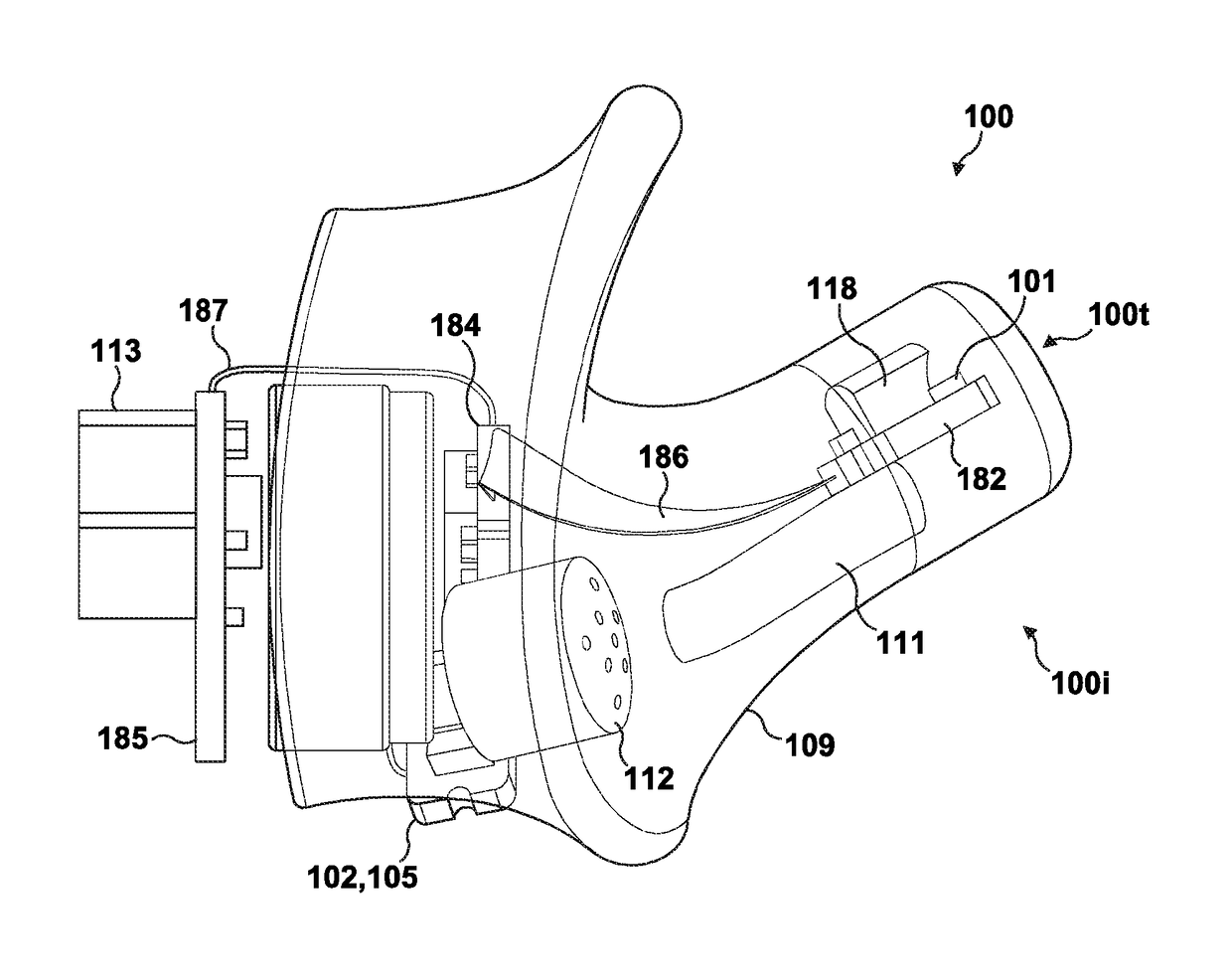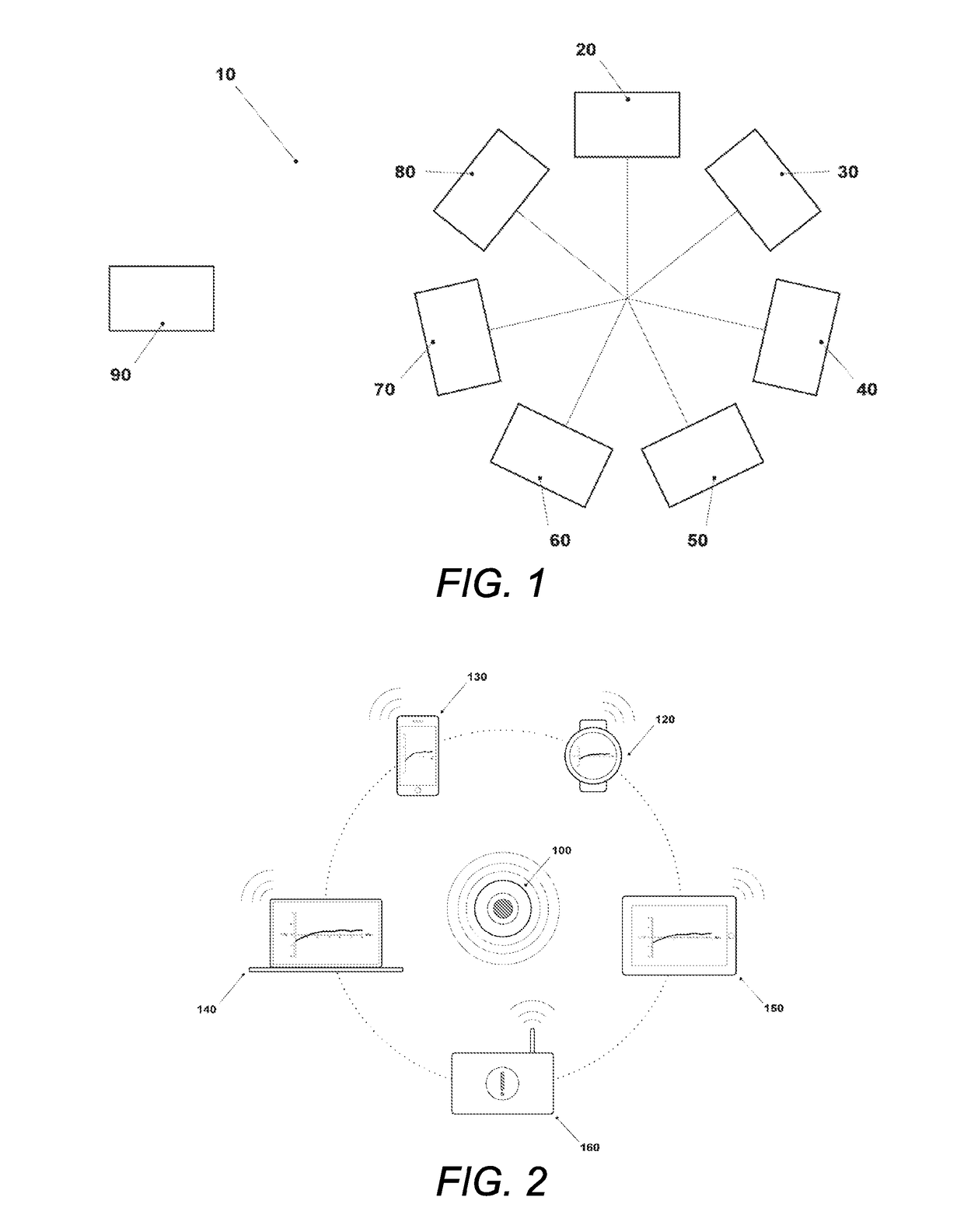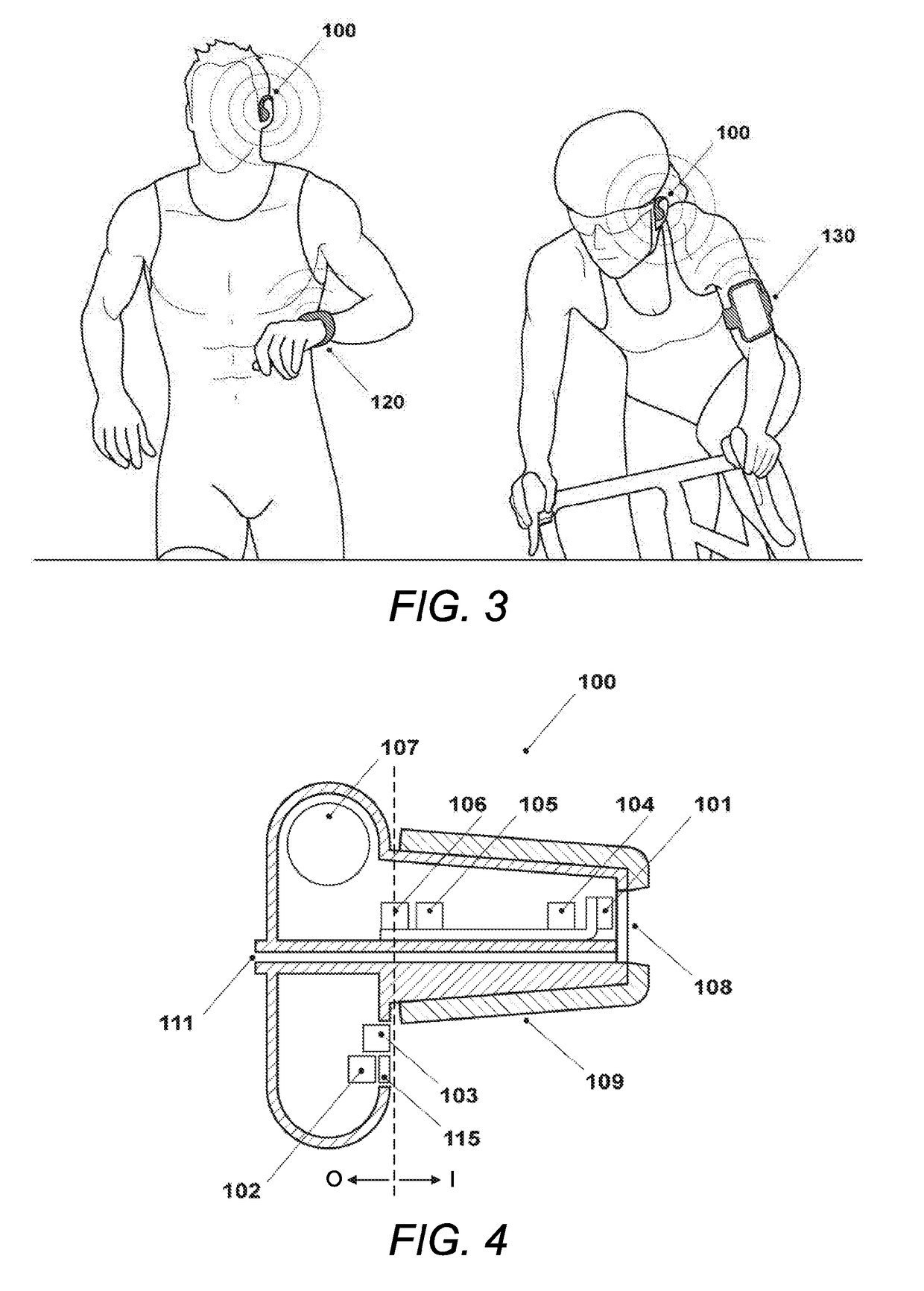Portable physiology monitor
a physiology monitor and monitor technology, applied in the field of portable physiology monitors, can solve the problems of inability to monitor the level, the subject may suffer heat, cardiac and respiratory related illnesses, and the inability to adapt to a wide range of potential applications, so as to improve the hearing ability of the subject, reduce environmental noise, and improve the quality of audio signals.
- Summary
- Abstract
- Description
- Claims
- Application Information
AI Technical Summary
Benefits of technology
Problems solved by technology
Method used
Image
Examples
Embodiment Construction
[0133]FIG. 1 is a block diagram of an embodiment of a portable physiology monitoring system.
[0134]The portable physiology monitoring system 10 includes a temperature sensor 20, a pulse oximetry sensor 30, a respiration sensor 50, a motion sensor 60, a processor 70 and a display 90. Preferably, the portable physiology monitoring system also includes an ECG sensor 40 and a speaker 80.
[0135]The temperature sensor 20 is arranged to measure the core body temperature of a subject; the pulse oximetry sensor 30 is arranged to measure the pulse rate, pulse volume and oxygen saturation level of a subject; the ECG sensor 40 is arranged to measure the ECG of a subject; the respiration sensor 50 is arranged to measure the respiration rate of a subject; and the motion sensor 60 is arranged to measure the movement and orientation of a subject. All sensors are arranged to communicate the measured physiological parameters to the processor 70. Upon receipt of the measurements, the processor is arrang...
PUM
 Login to View More
Login to View More Abstract
Description
Claims
Application Information
 Login to View More
Login to View More - R&D
- Intellectual Property
- Life Sciences
- Materials
- Tech Scout
- Unparalleled Data Quality
- Higher Quality Content
- 60% Fewer Hallucinations
Browse by: Latest US Patents, China's latest patents, Technical Efficacy Thesaurus, Application Domain, Technology Topic, Popular Technical Reports.
© 2025 PatSnap. All rights reserved.Legal|Privacy policy|Modern Slavery Act Transparency Statement|Sitemap|About US| Contact US: help@patsnap.com



